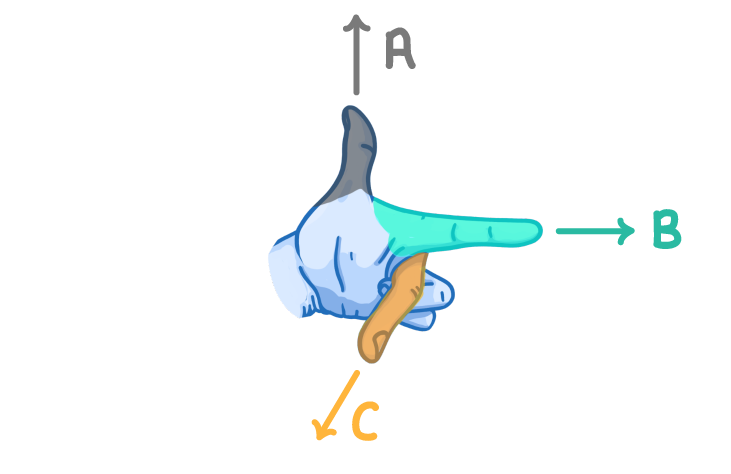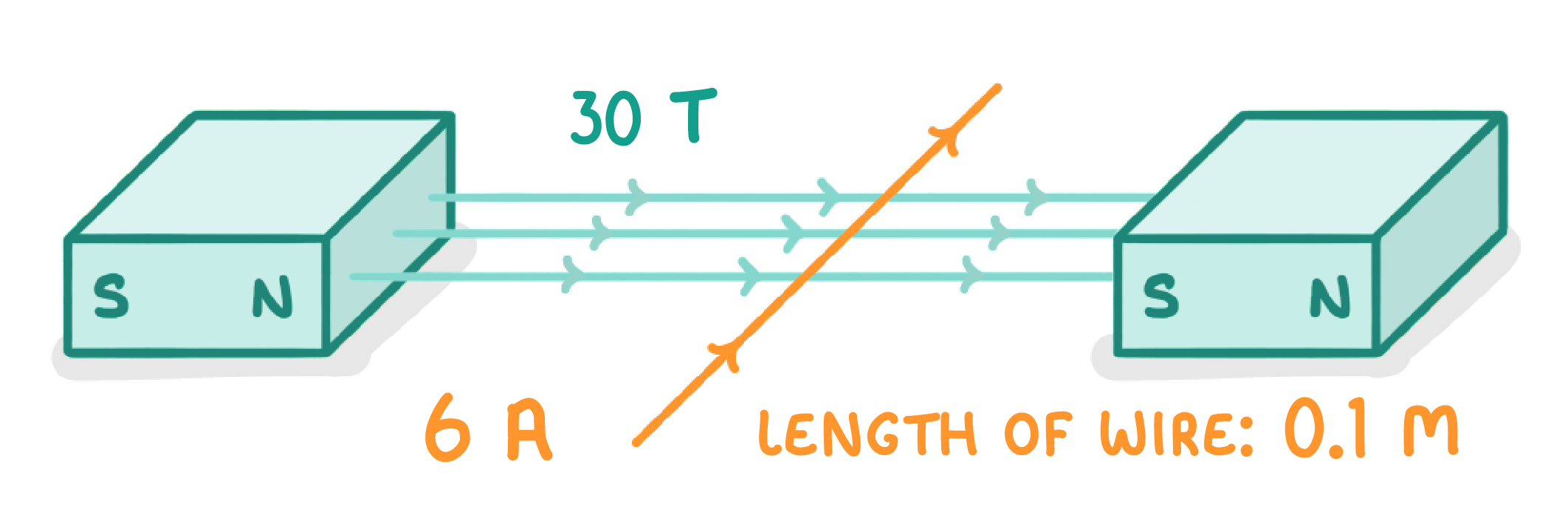Motor Effect
This lesson covers:
- The idea that a current-carrying wire will experience a force if placed within a magnetic field
- How to find the direction of the force using Fleming's left hand rule
- How to find the strength of the force using the equation:
motor / engine / current
A carrying wire in the presence of a magnetic field will experience a force. This is called the effect.
|
parallel / perpendicular
To experience the full force, a current carrying wire must be placed to the magnetic field.
|

Fleming's left hand rule can be used to tell us the direction of the force experienced by a current carrying wire in a magnetic field.
In the diagram above, match the letters A to C with what they represent in Fleming's left hand rule:
Direction of the current:
Direction of the force:
Direction of the magnetic field:
|

Use Fleming's left hand rule to find the direction of the force experienced by the wire.
The force is:
Downwards
Upwards
To the right
To the left
|
The force (F) experienced by the wire is determined by:
- The current (I) in the wire
- The magnetic field strength (B). This is also called magnetic flux density.
- The length (L) of the wire that crosses the magnetic field.
The formula to calculate the force is:
(Note: this formula is given to you in the exam)
|
The magnetic field strength (also known as magnetic flux density) is measured in:
Coulombs (C)
Amperes (A)
Volts (V)
Teslas (T)
|

A wire carrying a current of 2 A is perpendicular to a magnetic field of 15 T.
The length of the wire in the field is 0.2 m.
What is the force experienced by the wire?
N
|

A wire carrying a current of 6 A is perpendicular to a magnetic field of 30 T.
The length of the wire in the field is 0.1 m.
What is the force experienced by the wire?
N
|